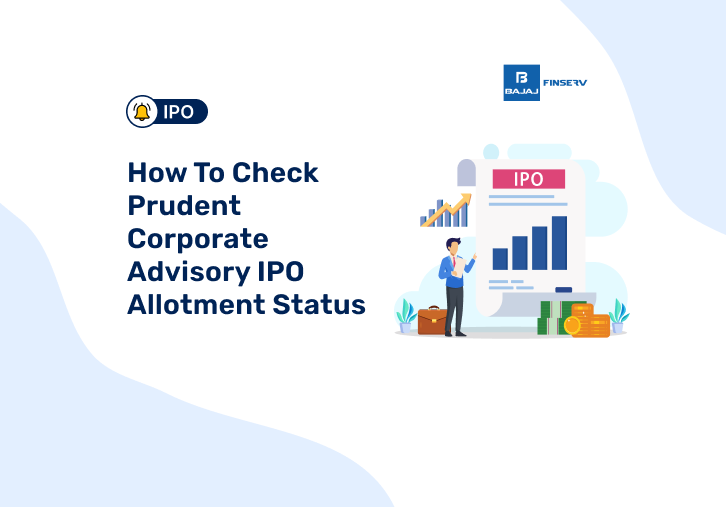BAJAJ BROKING
Different Types of Bonds Explained - add blog title
add short description here -
Bonds are a type of fixed-income security that is issued by companies, municipalities, and governments to raise capital. They are considered a safe investment option as they provide a fixed rate of return and are typically less volatile than stocks.
add your blog content here -
Bonds have become an essential part of the investment portfolio of many investors seeking to diversify their portfolios and generate steady income. However, not all bonds are created equal, and investors must understand the different types of bonds available to them before making investment decisions. From fixed-rate bonds to inflation-linked bonds, bond, and their types have unique features, benefits, and types of bond risk that appeal to different types of investors. Understanding the different types of investment bonds available can help investors make informed decisions and achieve their investment goals. In this blog, we will delve into the different types of bonds and explore their unique features, benefits, and risk.
Additional Read: How do bonds work?
What are the different types of bonds?
Fixed-Rate Bonds
Fixed-rate bonds are the most common among the classes of bonds. They offer a fixed interest rate for the duration of the bond. The interest rate is typically higher than that offered by savings accounts and other fixed-income investments. The fixed interest rate is attractive to investors who want a predictable return on their investment. These bonds are generally considered low-risk investments because the issuer is obligated to pay the interest and principal back to the investor at maturity.
Floating Rate Bonds
Floating rate bonds are also known as variable rate bonds. Unlike fixed-rate bonds, these classes of bonds do not have a fixed rate of interest. Instead, the interest rate is adjusted periodically to reflect changes in the market. The interest rate is typically tied to an index, such as the LIBOR or T-Bill rate. These types of investment bonds are attractive to investors who believe interest rates will rise in the future because they offer the potential for higher returns.
Additional Read: Sovereign Gold Bond
Zero-Coupon Bonds
Zero coupon bonds do not pay interest like traditional bonds. In this type of bond market, bonds are issued at a discount to their face value and are redeemed for the full face value at maturity. The difference between the purchase price and the face value is the investor’s return. Zero coupon bonds are attractive to investors who want a guaranteed return on their investment and do not need current income.
Puttable Bonds
Puttable bonds allow investors to sell the bond back to the issuer before maturity. This feature gives investors the flexibility to exit the investment if circumstances change. Puttable bonds are attractive to investors who want to mitigate the risk of rising interest rates or who need access to their investment before maturity.
Convertible Bonds
Convertible bonds give investors the option to convert their bonds into a specified number of shares of the issuer’s stock. This feature gives investors the potential to benefit from the issuer’s stock price appreciation while also providing downside protection in the form of a fixed-income investment. Convertible bonds are attractive to investors who believe the issuer’s stock price will rise in the future.
Callable Bonds
Callable bonds give the issuer the option to call back the bonds before maturity. This feature gives the issuer flexibility to retire the debt if interest rates decline or if the issuer’s creditworthiness improves. Callable bonds are generally considered riskier than non-callable bonds because investors may not receive the full return they expected if the bonds are called early.
Perpetual Bonds
Perpetual bonds, also known as consoles, have no maturity date. Instead, they pay a fixed interest rate indefinitely. Perpetual bonds are attractive to investors who want a reliable income stream without the risk of the bond being called back or maturing.
Inflation-Linked Bonds
Inflation-linked bonds are designed to protect investors from inflation. The interest rate on inflation-linked bonds is adjusted periodically to reflect changes in inflation. As the inflation rate rises, the interest rate on the bond increases, providing investors with a higher return. Inflation-linked bonds are attractive to investors who are concerned about inflation eroding the purchasing power of their investments.
Additional Read: Capital Gain Bonds
Things to consider before investing in bonds
While investing in the different types of bonds in India or in general, there are several important things to keep in mind to ensure a successful investment experience.
- First and foremost, the issuer’s creditworthiness must be considered. The issuer’s credit rating can indicate the issuer’s ability to meet its financial obligations.
- Second, the investor should consider the interest rate environment and the potential impact of interest rate changes on the value of the bond.
- Third, investors should be aware that the duration of the bond can have a significant impact on its price sensitivity to changes in interest rates.
- Fourth, investors should consider the bond’s liquidity and the ease with which it can be bought and sold in the market.
- Finally, a well-diversified bond portfolio reduces overall risk while increasing the potential for long-term success.
Keeping these factors in mind can help investors make informed decisions and achieve their investment goals while investing in different types of bonds.
Final Thought
In conclusion, bonds and their types, have their own unique features and benefits. Also, we have seen a classification of bonds in finance. Fixed-rate bonds offer a predictable return while floating-rate bonds provide the potential for higher returns in a rising interest rate environment. Zero coupon bonds offer a guaranteed return, while puttable bonds offer investors flexibility. Convertible bonds give investors the potential to benefit from stock price appreciation, while callable bonds give issuers flexibility. Perpetual bonds offer a reliable income stream, while inflation-linked bonds protect investors from inflation.
Disclaimer: Investments in securities markets are subject to market risks, read all the related documents carefully before investing.
Share this article:
- Related Articles
- Top Articles

Gold Rate Today | 16 September 2025
16 Sep, 2025 | 39 Min. read

How To Sell Shares From Demat Account?
15 Sep, 2025 | 6 Min. read

How to Apply for the Sampat Aluminium IPO
15 Sep, 2025 | 3 Min. read

Sampat Aluminium IPO
15 Sep, 2025 | 3 Min. read

How to Apply for the VMS TMT IPO
15 Sep, 2025 | 3 Min. read

VMS TMT IPO
15 Sep, 2025 | 5 Min. read

How to Apply for the JD Cables IPO
15 Sep, 2025 | 3 Min. read

JD Cables IPO
15 Sep, 2025 | 3 Min. read

Shringar House of Mangalsutra IPO Day 3 Subscription Status
12 Sep, 2025 | 2 Min. read

Dev Accelerator IPO Day 3 Subscription Status
12 Sep, 2025 | 2 Min. read

Urban Company IPO Day 3 Subscription Status
12 Sep, 2025 | 2 Min. read

How to Apply for the Euro Pratik Sales IPO
11 Sep, 2025 | 3 Min. read

Analysis to Become a Pro Investor
28 Dec, 2023 | 4 Min. read

Women In Real Estate Investing (Investree)
28 Dec, 2023 | 5 Min. read

How To Check Prudent Corporate Advisory IPO Allotment Status
27 Dec, 2023 | 3 Min. read

How To Boost Credit Score? – Steps to Improve Creditworthiness
27 Dec, 2023 | 4 Min. read

Advantages and Disadvantages of Opening Multiple Demat Accounts
26 Dec, 2023 | 4 Min. read

7th CPC LTC: Leave Travel Concession Rules for Central Government Employees
26 Dec, 2023 | 4 Min. read

7th Pay Commission: House Building Advance (HBA) Interest Rate FY 2023-24
26 Dec, 2023 | 5 Min. read

The Future of Trading: Exploring Bajaj Broking’s Demat Features
26 Dec, 2023 | 6 Min. read

7th Central Pay Commission Cpc Fitment Table
23 Dec, 2023 | 7 Min. read
All Categories
- All
- Annual Results
- Authorised Person
- Bonds
- Brokerage Se Azadi
- Budget
- Calculators
- Commodities
- Commodities Market Today
- Company Overview
- Demat Account
- Derivatives
- Futures and Options
- Global Market
- Global Market And News
- Gold Rate Today
- Gold Rate Today Updates
- Group Companies
- How To
- How To's
- IPO
- IPO Allotment Status
- Indices
- Intraday Trading
- Investing
- Investment
- MTF
- Must Reads
- Mutual Funds
- News
- Nifty 50
- Personal Finance
- Quarterly Results
- Refer and Earn
- Savings Schemes
- Sectoral Blogs
- Taxes
- Technical Analysis
- Top Gainers And Losers
- Trading
- Trading Account
- US Stock Market
- YouTube Blogs
Read More Blogs
Our Secure Trading Platforms
Level up your stock market experience: Download the Bajaj Broking App for effortless investing and trading



